Beijing, China has always been a dream. Not just because almost everything we’ve ever used during our life said “Made In China” on the back, but also because it has always sounded intriguing and different. Not only were our expectations fulfilled, we were actually blown away by Beijing. The trip to China has to be limited to 3 days due to the high cost of Visas for Americans and the difficult steps that China requires for anyone to obtain even a tourist Visa.
When we got the chance to go to China in a 72-hour stop-over, the first thought that went through our heads was “Of course – Beijing!”. I mean, if you go to China and don’t visit Beijing, have you really been to China at all? Let me start by saying that the moment we landed in Beijing, we felt that this was about to be something very different from the trips to other foreign countries we’d been on before. This was about to be an adventure. We were going to concentrate on two main areas: The Forbidden City Area of Beijing and The Great Wall of China.
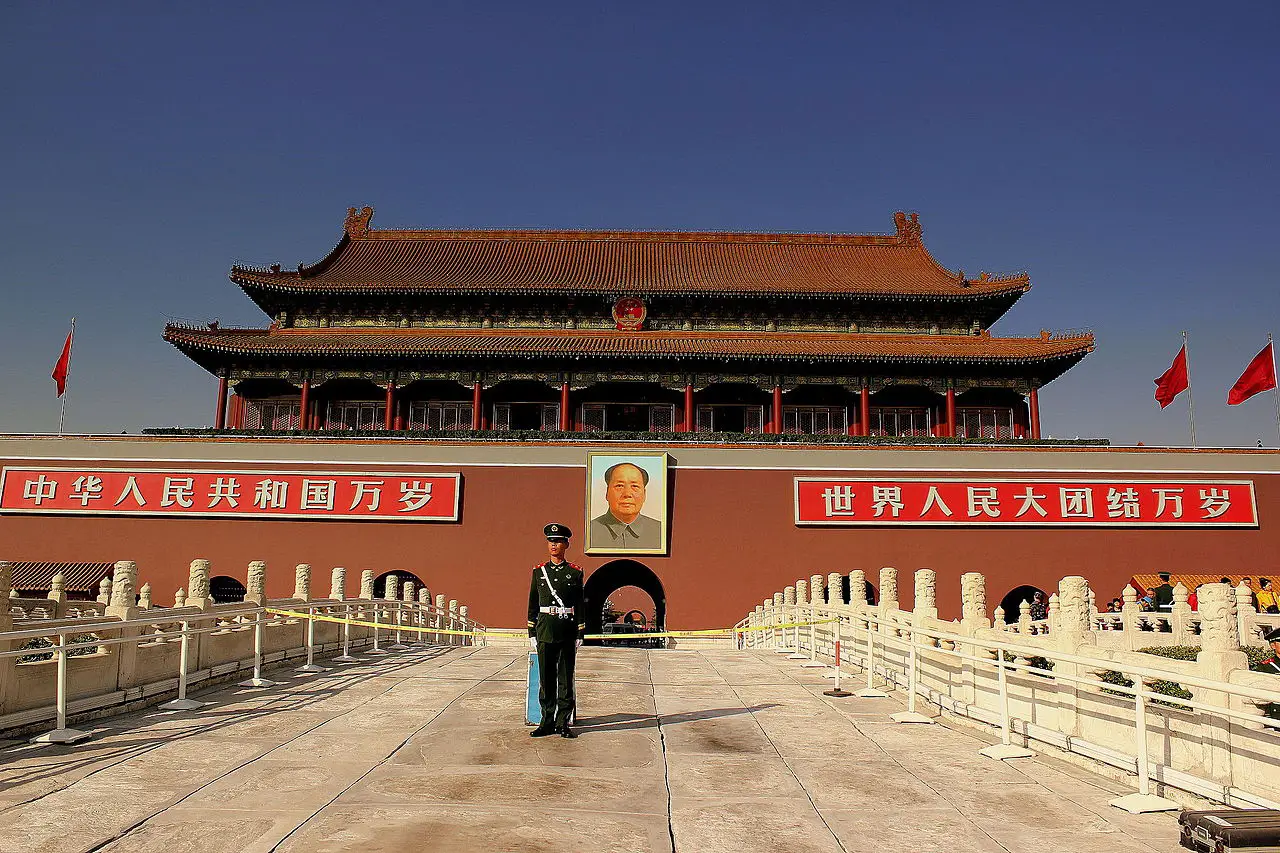
The city, while very large, is very easy to navigate and most of the things you will want to visit can easily be accessed by taxi for only about 20 Yuan which is $1.20 in U.S. dollars. Surprisingly, the taxi service was one of the best-priced services in all of Beijing. We decided to make our first day the one we had in the city of Beijing with the Forbidden City being our first stop.
This was the palace of the Ming Dynasty of China and later the Qing dynasty. The city is located in the center of Beijing and now houses a museum and art area. For over 500 years the city was the home to the emperors and families as well as all of the people required to oversee its care such as household, garden and landscape and military guards. The city was also the center of politics for China for over 500 years.
It took about 15 years to complete the construction of the 980 buildings and covers 180 acres, which is about 1/2 mile square. The Forbidden City is the largest collection of structures made of wood in the world, to be listed in the UNESCO sites.
While the Forbidden City is under the care of the Palace Museum, many of the artifacts have been moved to the National Palace Museum in Taipei. You will still find that there are plenty here to give you the overall feel of what it was like over 500 years ago. It is unique, to say the least, to walk among the building, run your hand down the stone rails that were used by the Emperors of China all those many years ago. This site gives you access to all of the areas of the Forbidden city that were such a mystery to the residents of China so many years ago.
The Forbidden City Park Grounds
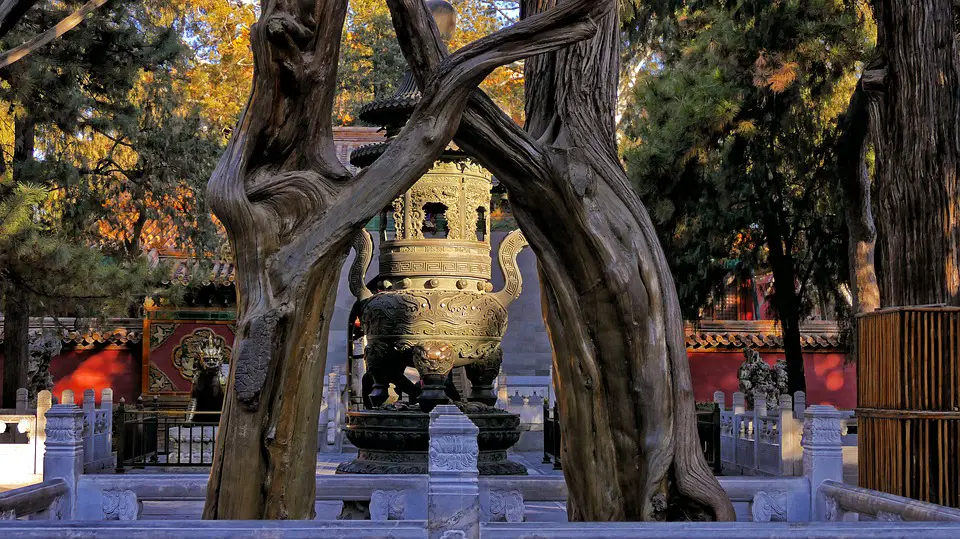
The area around the building is unique in its own right. The park areas are huge. They have benches to sit beneath the trees that are as old as the city itself. For an hour, we sat and watched a group of men and women practicing a ballet routine while holding a small racquet in one hand, balancing a ball. Every movement they made with the racquets was so crisp and quick — going over their heads, behind their backs or spinning the racquet in their hands — that the ball never dropped. They did this to music and as soon as one selection finished more would join and they would perform another routine to the next song. The choreography and routines were so very interesting we could have probably spent the day just watching them.
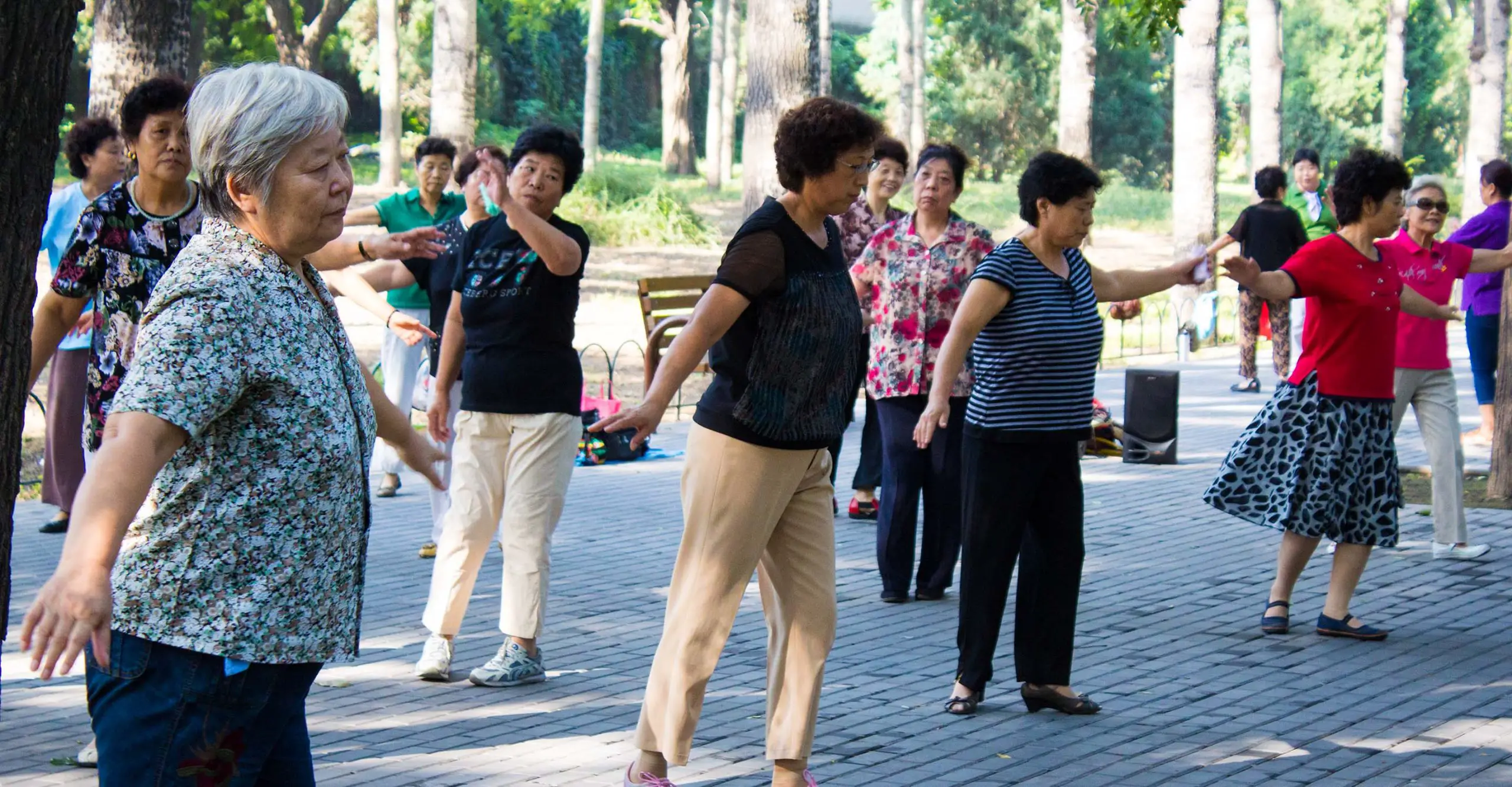
As I mentioned, the women practicing their routines, were under a grove of the most beautiful trees. There were hundreds of these trees and they are a type known as ‘consort pines’ and they are very beautiful. As they grow, the trunks seem to twist around in a spiral. Many grow in the Royal Garden area, a special place for the royal family to relax, play games, drink tea and entertain important guests.
Beijing: Jingshan Park
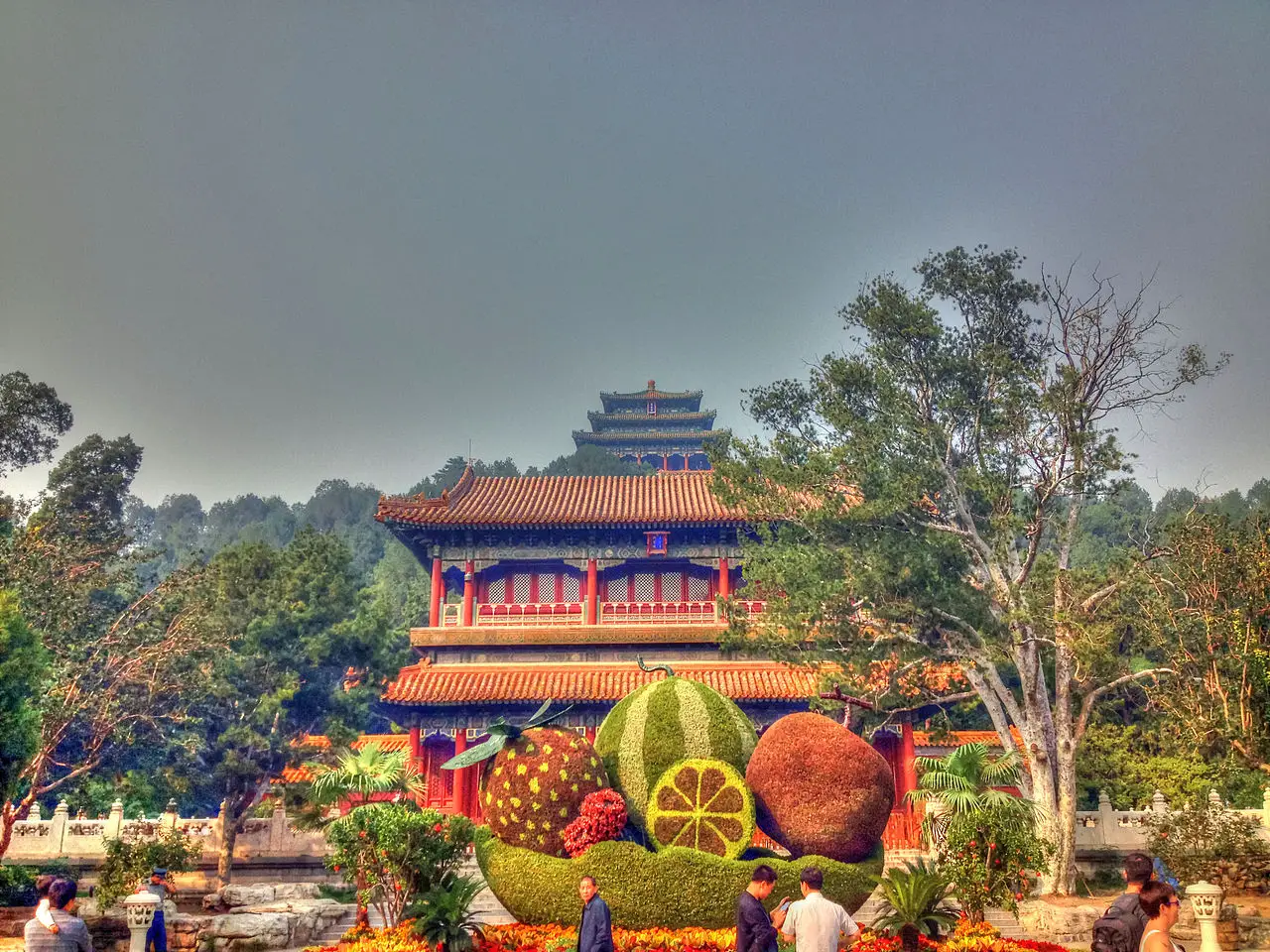
We left the Forbidden City and exited through the north gates into an area known as the Jingshan Park. The park is 25 acres in size and was built 500 years before the Forbidden City itself. It was built as a royal garden and was later used as the place to put the mounds of dirt excavated from the Forbidden City Moat during its construction. The dirt was piled high into a 150-meter tall hill that dominates the park. Then it was divided into 5 sections, where they built five pavilions.
The last Ming Dynasty Emperor went to this hill and hanged himself the day his army was defeated by the forces of the rebel leader Li Zicheng.
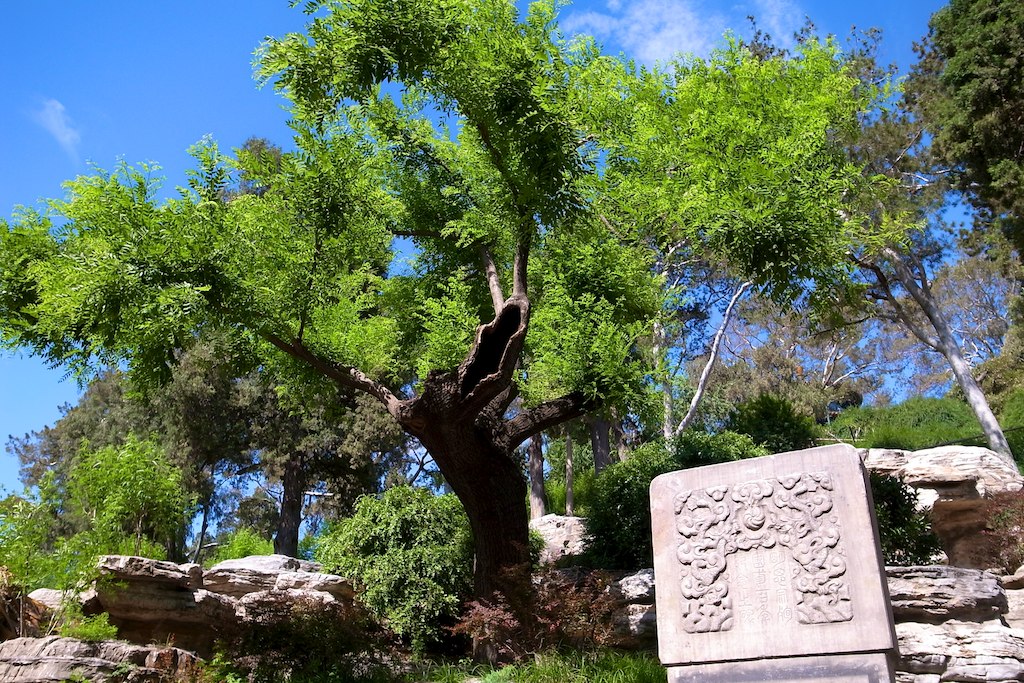
The hills were originally separated by the moat from the Forbidden City on the north side of the complex. Now a street alongside the moat has been added. The park is a very popular place for locals. Sadly, it is somewhat overlooked by people passing through Beijing. I only found it by looking at a map of the Forbidden City. It provides a great place to get photographs of the park itself and of local people singing, dancing and Kuiaban. Kuiaban is a form of oral storytelling much like the rap lyrics of today. The teller usually uses two wooden clapboards to provide a beat to the tale. It is also a popular photo-shoot area.
Jingshan Park is a fun and interesting place to see, so be sure to visit it along with the Forbidden City.
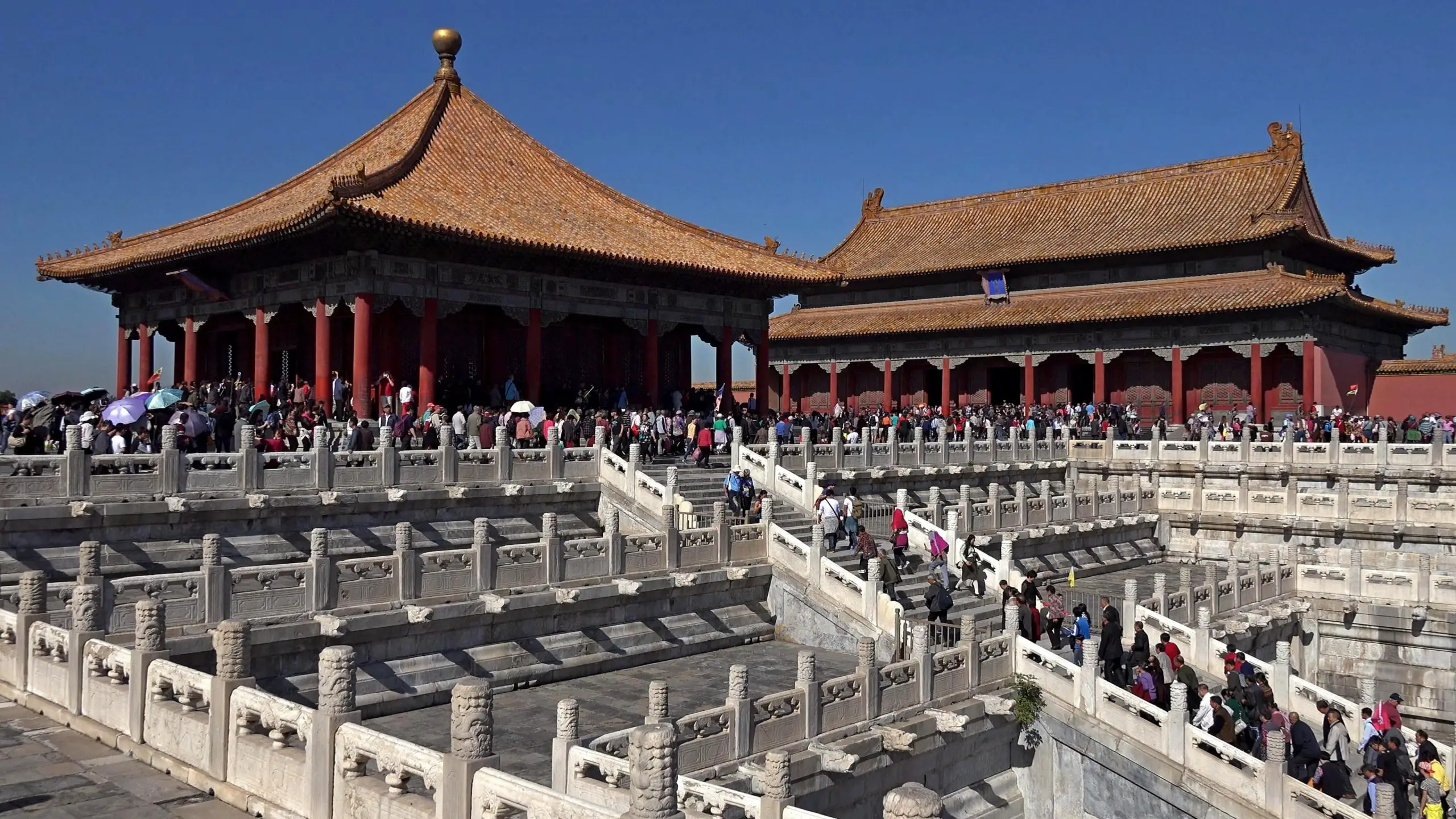
Nearby Tiananmen Square
We also visited was the historical Tiananmen Square, which is the biggest public square in the whole world! The moment I was in the middle of it and looked around, I realized that Beijing is extremely rich in history and culture. Even now, thinking of me, standing in a place where such big numbers of people have congregated in a protest, was awe inspiring. I remembered the picture of the single man stopping the tanks.
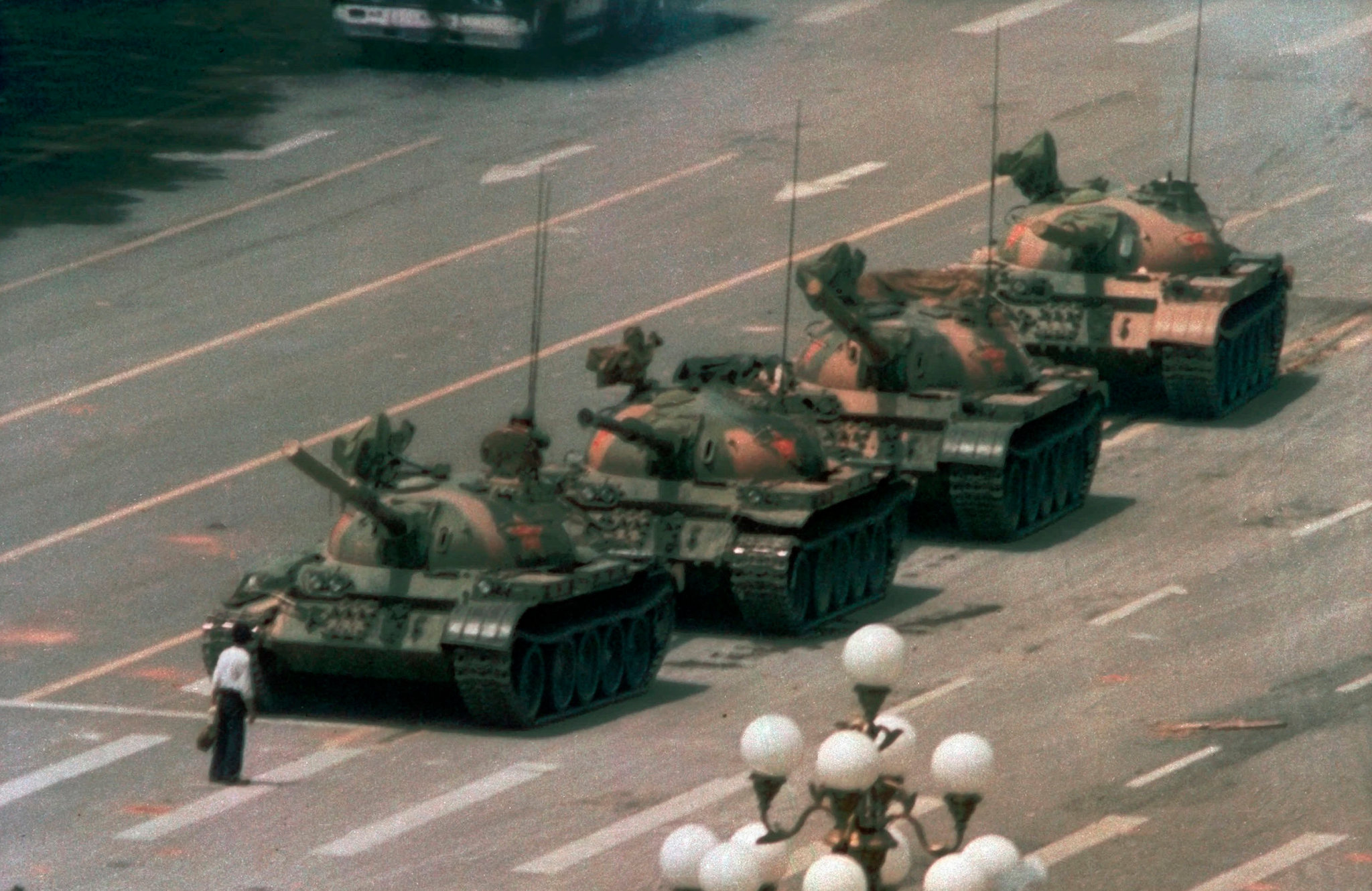
A day after Chinese military killed at least hundreds, if not thousands of demonstrators in Beijing in 1989, a wiry man in a white shirt stepped in front of a line of moving tanks near Tiananmen Square and become one of the most famous protesters of the 20th century.
The Great Wall of China
This iconic landmark is considered by many as one of the Wonders of the World. Getting up to the Wall is difficult in several ways and where you go on the wall can determine what you are able to see and how many people you will be sharing those views with. The difference can mean a Trip To The Great Wall or a GREAT Trip To The Great Wall.
Do keep in mind that simply hiking the wall is not the only difficult part of the trip. Just getting up to the area where you can catch a cable car to the top can be a difficult task for some people. The other is that the wall follows the top of the mountains and contains 100’s and 100’s of stair/steps in each section.
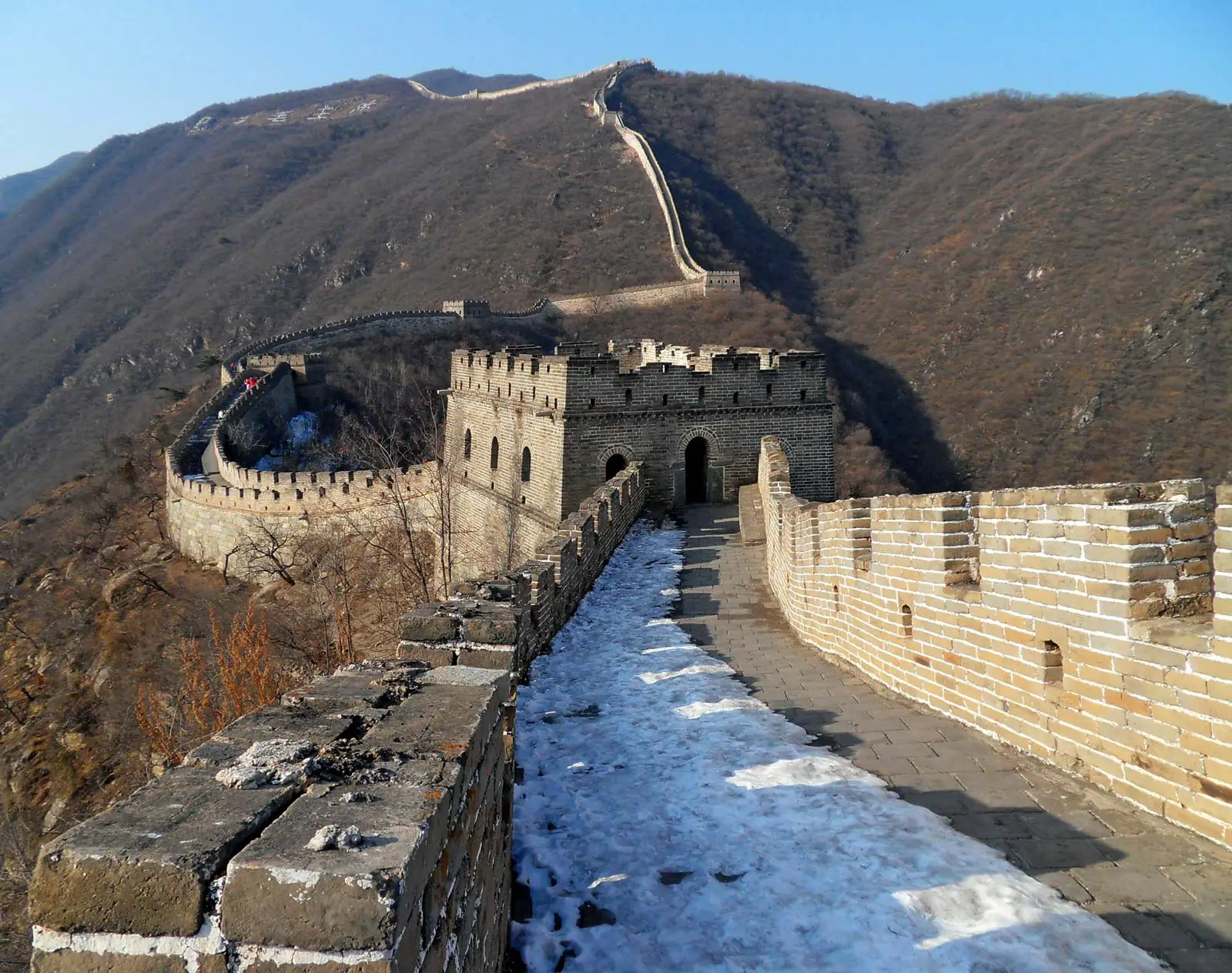
When you ask anyone in China how old the wall is, they will eagerly tell you 2000 years old. While some of the work was done that long ago. The majority was done between 1400 to 1600 about 500 to 700 years ago. All three of the sections below have been rehabbed and contain cable car lifts. You will still be able to see and walk on the older sections of the Wall if you like. Be careful and always watch you footing since, in some places, the walls have deteriorated to little more than a pile of rocks.
We have visited Angkor Wat in Cambodia, Bagan in Myanmar, The Pyramids in Cairo along with the Temples in Luxor during the last 15 months. They are each great in their own rights, but the Great Wall might be the greatest engineering feat in history based on the scale and time it took to create. That opinion will not be shared by others, I am sure. As a destination, I would not, however, rate it as No. 1. The 4200 temples and pagodas in Bagan is my first choice along those lines.
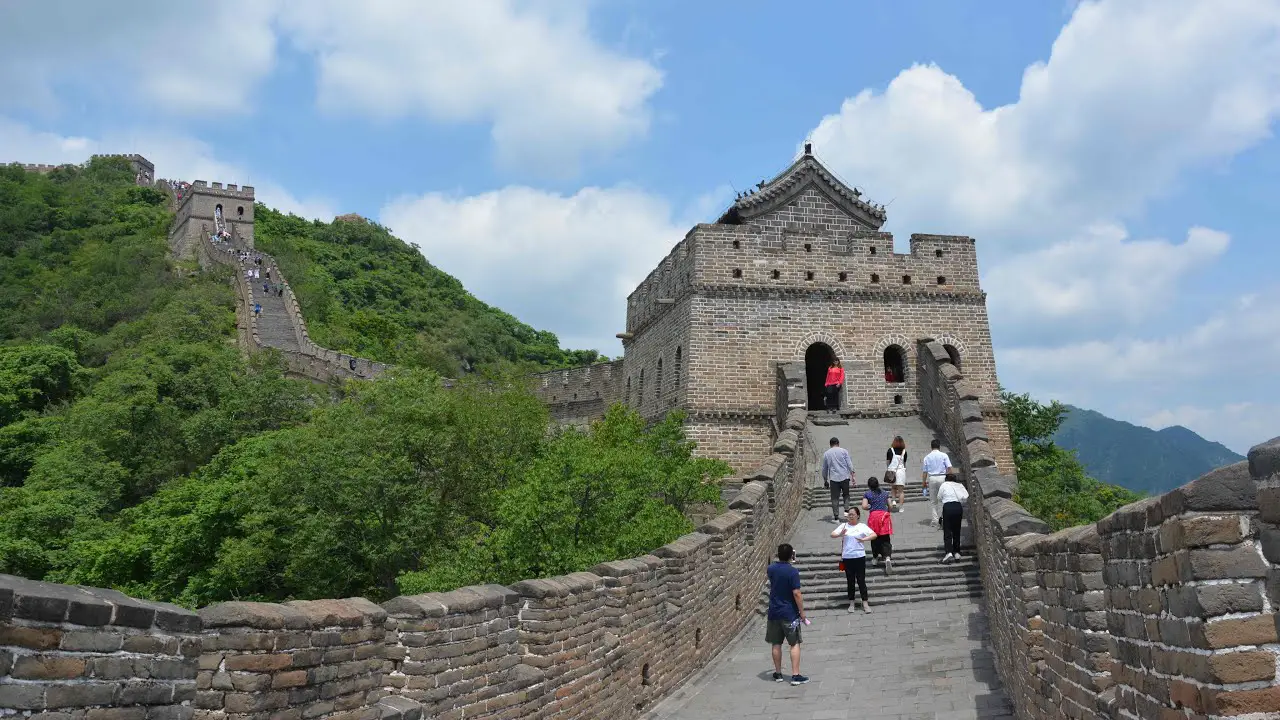
3 Sections of the Great Wall Near Beijing
The main areas of the Wall are relatively close to the Beijing area. Following is a bit about three areas to visit.
1. Badaling Wall – This section is only 50 km. from Beijing and being the closest it is the one that is most packed with people. Many times during peak seasons it resembles a rally of some type with people standing shoulder to shoulder and walking and hiking the wall is next to impossible especially since most of the tours only give you around 3 to 4 hours to spend on the wall.
2. Jinshanling – This is a preferred section to visit but it does provide a distinct problem. While the lack of people is great this section of the Wall, it is 10.5 kilometers long and the tours drop you off at one end and pick you up at the other. This is not the section to visit unless you are in tip top shape. While 10.5 km does not sound like a long distance, the hills and steps to complete the distance make it very difficult. Choose this section if at all possible if what you are looking for is alone time, just really research it to see if you are comfortably able to walk the distance and hills within the time allowed. We opted for section 3 below.
3. Mutianyu Wall – This was the part of the Wall we selected and we think we made the best decision based on the number of people and our fitness level. This is a shorter/smaller section being only 5.4 kilometers in length. During the spring and summer months, the mountains are about 96% covered with trees and vegetation providing beautiful views. The most striking view is from Tower 23 at the end of the section overlooking the Mutianyu Pass but it does take a good effort to accomplish all of the steps required in your allotted time. Remembering you must travel to that end and back to the drop-off point in the allotted time.
The Great Wall Guard Tower
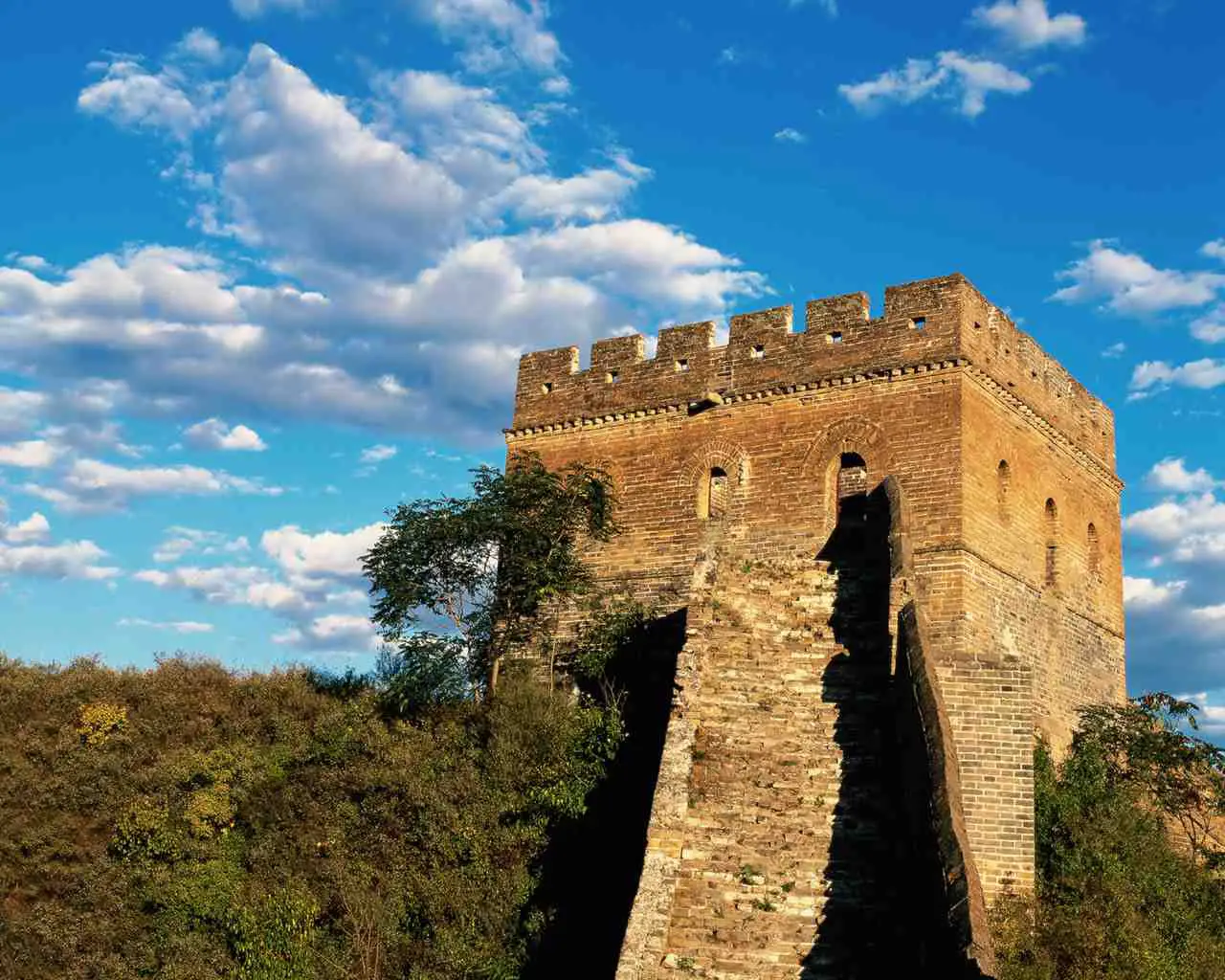
Another striking difference between this section and all others is that it provides a chairlift like the ones used on ski slopes as well as a cable car. When you use the lift you are taken to a different end of the Wall and the neatest part is that you can choose to take a toboggan ride back down. The trip down is a thrill you don’t want to miss. Just make sure to tell your tour guide that this is what you want so he can steer you toward the correct place for tickets up.
Our Impressions of China
We did not have the ability to spend enough time in China to give you a complete, in-depth opinion. Our impressions may have been different if we had had more time and visited towns and cities with less population than Beijing. We found that Beijing was much more like a Western or European city than most of the others we visited in SE Asia. I am sure that we would have found Tokyo to be that way as well. We did not get quite a friendly feel as in other places. People were more fixed on where they were going and did not take as much time to say hello. However, that is to be expected with a large urban population. That was not the case in every instance, our hostel workers were great. The small restaurant across the street from the hostel was equally impressive. We did have one beautiful little girl come up to us with two handfuls of cherries to share while her smiling father looked on. Many times the children are a little taken aback since we look so different from the rest of population. It did not bother this youngster.
Accommodations and Food
To close, we did have such a great experience at Lee’s across from the Dragon Dragon King Hostel. The restaurant is open from only 4:30 pm to 10 pm and you will usually have to wait 15 or 20 minutes for a table. They offered about 15 types of grilled, flavored and bar-b-que chicken wings. Mutton, chicken, curry chicken, shrimp, chicken feet, beef and pork all with the different flavors. Last they had fresh scallops in the shell with cheese, soy sauce and wasabi flavoring. I have never tried wasabi but had heard of it so often I had to try. It was unique, much like horseradish but much much stronger. Will clear you sinus passages and really warm you up but, very good. Be sure and find the place and eat well, we were only in town for three nights and two of them we spent at Lee’s. We also had the cheese scallops and they were excellent unless you are a lover of hot/spicy food, I would steer clear of the wasabi.
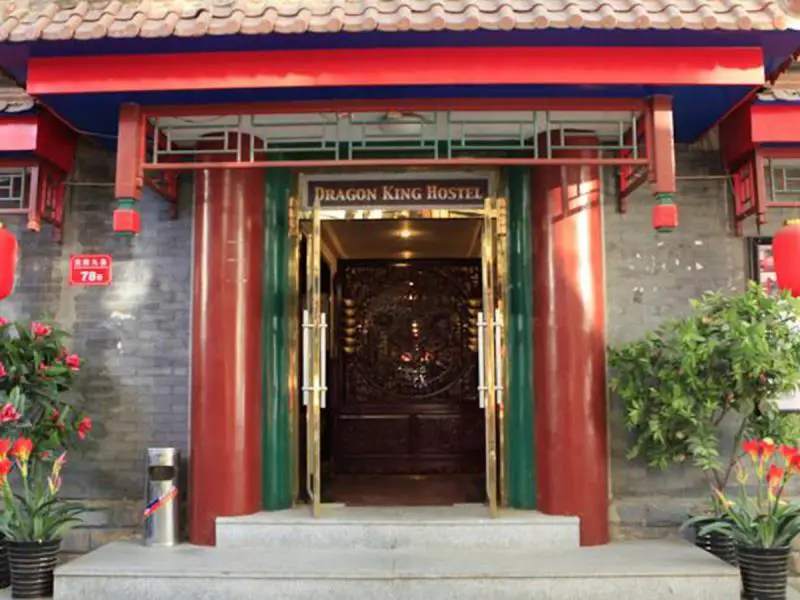
We would love to have visited more places in China such as Hong Kong, Shanghai, and Tibet but the time allotted to us only gave us this brief glimpse.
As always, our photos are posted here.
